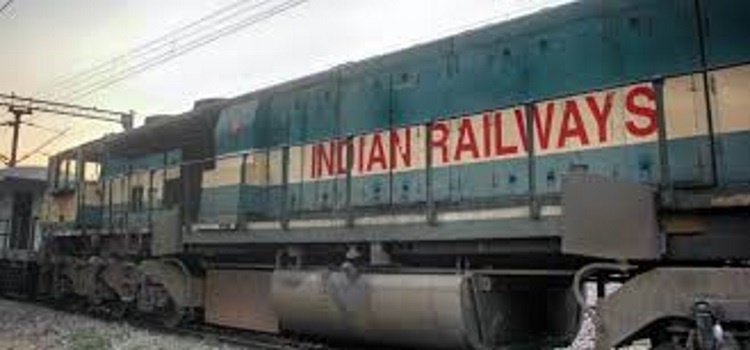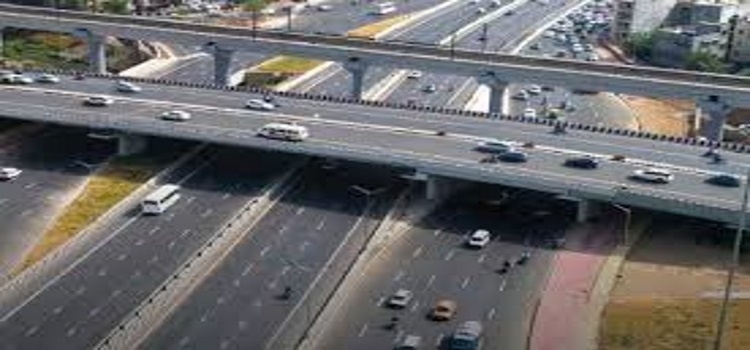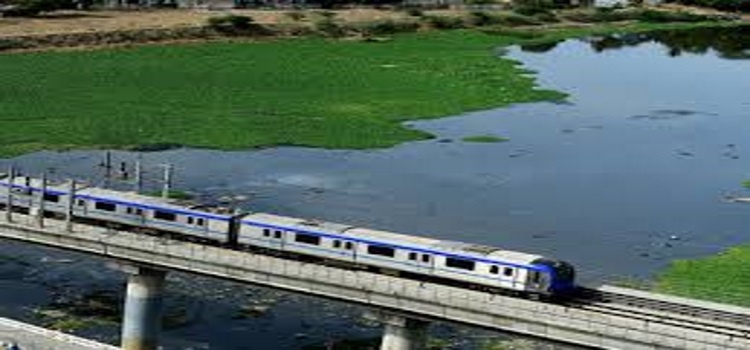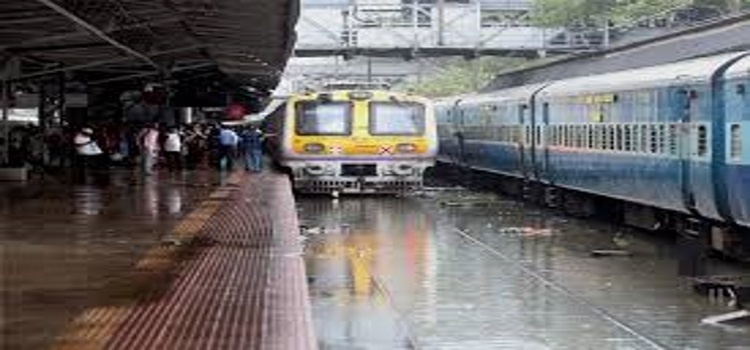The Tripura Police Mobile Task Force (MTF) on Thursday arrested 24 Bangladeshi youths from the Agartala Railway Station for intruding into the state without valid passports, an official said.
MTF Superintendent of Police Abhijit Chaudhuri said that all the 24 youths arrived here from different states through trains.
“Documents and identity cards of madrasas of different states along with mobile phones and Indian currencies were found from the intruders. They have no valid passports,” Chaudhuri told IANS.
He said that these youths would be handed over to the Government Railway Police after preliminary interrogation.
Tripura shares an 856 km border with Bangladesh, most of which is fenced except some stretches in the eastern frontier of the mountainous state.
Officials of the National Investigation Agency (NIA) are interrogating 24 Bangladeshi youths arrested in Agartala on Thursday reportedly before they could return to their country, a senior police officer said on Saturday evening.
“A two-member NIA team from Guwahati is interrogating since Friday the 24 Bangladeshi youths lodged in three different police stations in Agartala,” Tripura Police Mobile Task Force (MTF) Superintendent of Police (SP) Abhijit Chaudhuri told IANS here. A local court sent the intruders to seven-day police custody on Friday.
The MTF personnel on Thursday arrested the 24 Bangladeshi youths as they reached the Agartala Railway Station from outside the state. “These youths after entering India illegally, probably through West Bengal borders, mostly stayed in Uttar Pradesh,” the MTF SP said.
“Documents and identity cards of madrasas of different states, along with mobile phones and Indian currencies, were recovered from the intruders. They have no valid passports,” Chaudhuri said. Once the interrogation is over, these youths would be handed over to the Government Railway Police.
The interrogators are yet to disclose whether the Bangladeshi nationals were involved in any crime in India. Tripura shares an 856km border with Bangladesh, most of which is fenced except some stretches in the eastern frontier of the mountainous state.
During the investigations a number of madrasas came under the scanner of the National Investigation Agency (NIA), National Security Guard (NSG), Intelligence Bureau (IB), etc.
The NIA and NSG investigators carried out extensive search at Simulia madrasa under Mongalkote police station in Burdwan and also at Mukimnagar in Murshidabad’s Lalgola. They recovered mobile phones, SIM cards, jehadi literature and cables from the residence Jamat Sheikh, the father-in-law of absconding terrorist Sheikh Yusuf in Nawpara village of Mangalkot.
Yusuf was a teacher at the Simulia madrasa, located 40 km away from the Khagragarh blast site in Burdwan, which was believed to be a training centre for the terrorists. Yusuf is one of the prime suspects in the Burdwan terror network.
Officials investigating the Burdwan blast pointed out that these terror modules recruited youths and women, and set up several illegal madrasas to introduce radical philosophy among the impoverished minority population. For them, the target audience was always easy to penetrate.
Sources said NIA officers seized a large number of books and documents, 12 trunks and a car from a madrasa at Simulia where the Burdwan blast accused were suspected to have been radicalised.
The NSG and NIA officials also recovered a huge cache of sophisticated explosives from other terror hideouts in Burdwan.
The officials also visited the Mukimnagar madrasa in Murshidabad’s Lalgola. They had found another madrasa at Tamilpukur in Burdwan, which was under construction and was built on a huge plot of land financed by Mohammad Yusuf and Sobhan Sheikh, a carpenter.
Sources said the subversive modules, several of whom were members of the Jamaat-ul- Mujahideen Bangladesh (JMB), became operational in the state since October 2011, as their members had infiltrated into India and have been operating with the help of local support.
These elements also received tactical support for staying close to the political formation (mainly the ruling Trinamool Congress party) in the rural belts and enjoyed several undue benefits as no one could question their identities.
“It is a very sensitive issue. It has got lot of implications. The situation is really complex now as there are several direct and indirect factors involved in it,” said Sandhi Mukherjee, a retired IPS officer.
Investigations revealed that there are some 58 terror modules operating in West Bengal.
The probe also zeroed in on some 180 Bangladeshi nationals operating these modules and working with JMB. As many as six people, including two women, were arrested in connection with the Khagragarh blast in Burdwan while six more people were arrested in Assam.
The incident was being linked to terrorist groups from across the border having connections with al-Qaeda, LeT and HUJI, sources said. However, not everyone is willing to accept that illegal madrasas are breeding grounds of terror networks.
Noor-ul- Rehman Barkati, the Shahi Imam of Tipu Sultan Mosque here, said: “It would not be proper to label all the madrasas as nursery of terror logistics. There are only about 500 madrasas recognised by the state government while over 4,000 such madrasas are still unrecognised.”
He said the entire episode was a political conspiracy to dislodge the ruling Trinamool government.
“Everything is being framed to target the year 2016 so that the Bharatiya Janata Party can gain in the state Assembly elections,” he added.
According to NIA sources, the primary objective of these hubs was to give training to prospective militants in explosive manufacturing and in establishing links with international terror outfits.
The terror groups most of whom are members of the banned Jamaat-ul Mujahideen, a Bangladeshi outfit, have managed to infiltrate and start operations with the help of local support since October 2011, according to the report.
They recruited young men and women and set up several illegal madrasas in order to introduce their radical philosophy among the minority community.
The initial findings indicate that the investigating agency would require more time to unearth the real magnitude of the conspiracy hatched by terrorists in the rural belts of West Bengal.
“The situation is very complex now. There are several direct and indirect factors involved in it.
“These illegal madrasas mushroomed over a period of time as practically there was no monitoring or intelligence mechanism available with the local administration,” informs a senior official of the State police.
“They (people engaged in terror activities) also enjoy local political support and set up these terror cells right under the nose of the administration,” says the official.
“By cozying up to the ruling Trinamool administration, the terror groups successfully avoided any queries pertaining to their identities from law enforcement agencies,” the official alleges.
TERROR ON RENT
According to sources, they were also given a free hand by the local police in whatever they did.
As a result they indiscriminately built up bases, purchased agricultural land to set up illegal madrasas, recruited locals for subversive activities, gave arms training and imparted ideological lessons.
“The terrorist elements successfully spread their networks in the impoverished minority-dominated belts cashing in on factors such as illiteracy and large-scale migration of youths from other parts of the state for jobs,” says another official.
As the NIA and National Security Guard (NSG)-led joint investigation is progressing, two things are gaining prominence: one, the terrorist group used to enjoy indirect support from the ruling Trinamool Congress locally and two, there was a massive failure of the state intelligence machinery which failed to identify the suspected terrorists holed up in the rural outskirts.
The state intelligence agencies also failed to monitor activities carried out at madrasas in the rural pockets of Bengal.
The investigating team has also expanded its search to include other neighbouring madrasas that are allegedly operating illegally.
The team also found another madrasa at Tamilpukur and many other areas which was under construction on a huge plot of land without permission.




